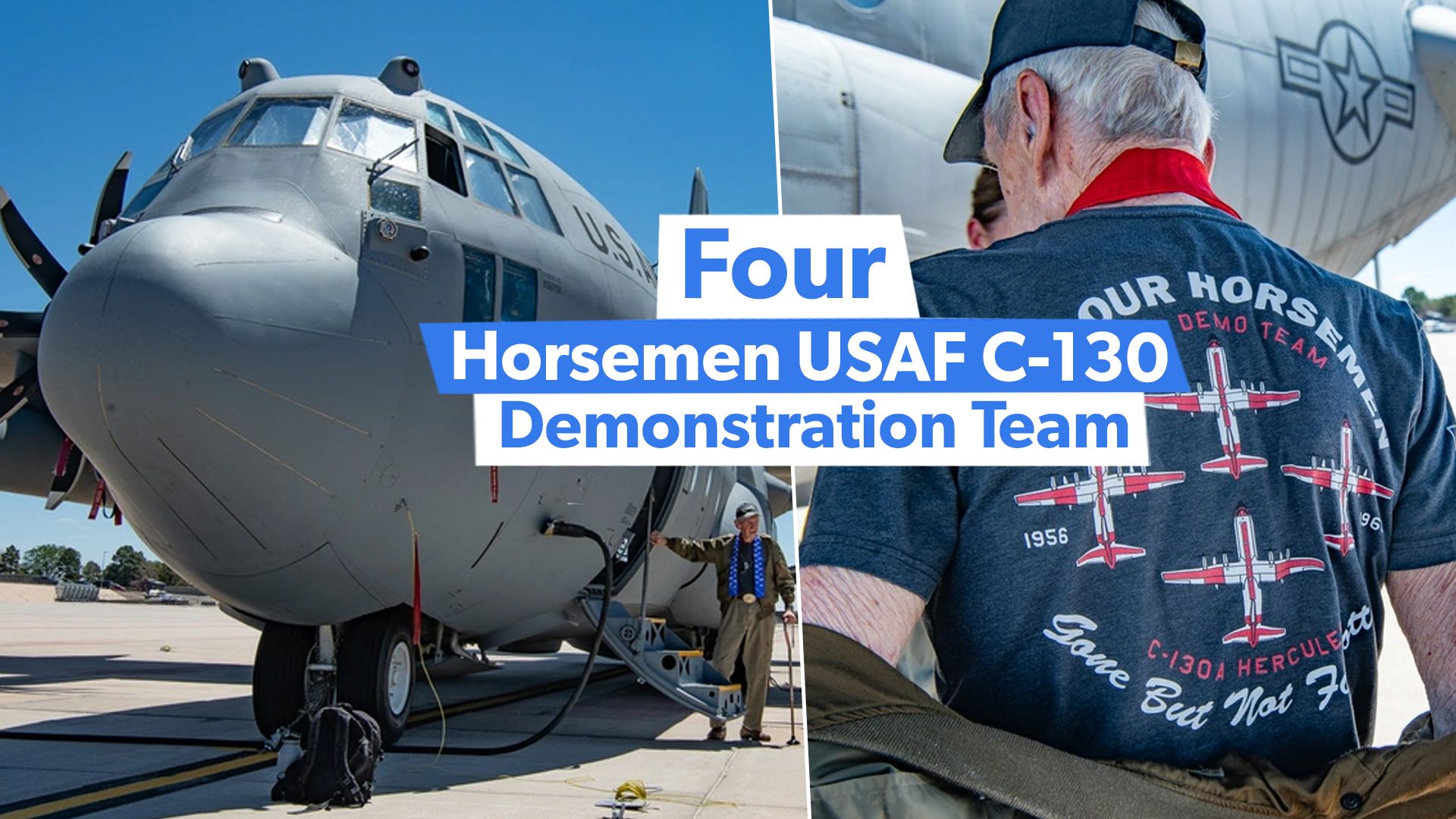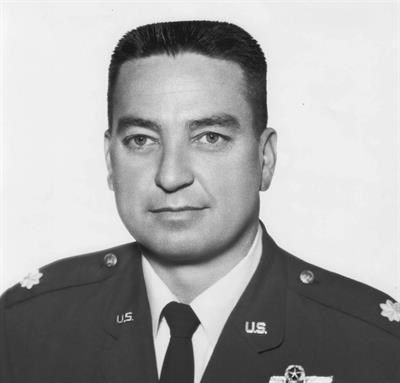This is a story about the septuagenarian Lockheed (now Lockheed Martin) C-130 Hercules (AKA “Herc/Herk”) and one of its original, soon-to-be centenarian pilots. Jim Akin, a 99-year-old legacy C-130 pilot, recently reflected on his role in the first US Air Force C-130 Demonstration Team, known as the Four Horsemen.
Origins of the team
When one thinks of military aviation demonstration teams, typically the US Navy’s Blue Angels and the USAF’s Thunderbirds, performing death-defying high-speed maneuvers in fighter planes such as the Boeing F/A-18 Super Hornet and the General Dynamics cum Lockheed Martin F-16 Fighting Falcon (AKA the “Viper”) respectively.
Lockheed took over the F-16 program from General Dynamics in 1993 and then became Lockheed Martin via its merger with Martin Marietta in March 1995.
However, military demo teams haven’t been the sole territory of fighter jocks. As explained by Technical Sergeant (TSgt) Justin Norton of the 302nd Airlift Wing at Peterson Space Force Base, Colorado:
“Ninety-nine-year-old retired Lt. Col. Jim Akin was one of four pilots who flew the C-130A Hercules from early 1957 to 1960 as part of the first Air Force C-130 demonstration team, known as the Four Horsemen. The team was named in honor of Coach Knute Rockne’s legendary backfield on Notre Dame’s 1924 football team. The first C-130 entered service in the Air Force in December 1956, and the team showcased the aircraft’s maneuverability and its capacity to take off and land in formation on short runways.”
Jim Akin was still a young Captain (pay grade O-3, not to be confused with the rank of Captain of the Navy and Coast Guard, which carries the pay grade of O-6) when he was selected for the demo team. His three fellow selectees were also fellow Captains: Gene Chaney, David Moore, and Bill Hatfield.
According to HistoryNet, these four Captains were attached to the 774th Troop Carrier Squadron (nicknamed the “Green Weasels”) on temporary duty (TDY) at Fort Campbell, Kentucky, for a week of dropping troops of the US Army’s 101st Airborne Division (the “Screaming Eagles”). One fine day that week, high winds led to a cancelation of the day’s drops and a mission stand-down for the crews, so, looking for some time-killing activity to stave off boredom, the four young hotshots decided to practice some formation flying, heading out over the fields of Kentucky and Tennessee, where they started moving closer and tighter together in formation. Next, they returned to Ft. Campbell airfield and made several low-altitude passes over the runway, still maintaining their tight formation. Suddenly, the four flyboys formulated an idea:
“Why not practice until they got really adept with the planes, and then go around to military bases and put on performances for the troops?”
The Horsemen’s stunts
As ungainly as the C-130 might look to the untrained eye at first glance, it’s actually a surprisingly maneuverable airplane, particularly for prop-driven transport. Among the acrobatics that the Horsemen performed with their Herks:
- When they demoed the C-130’s short-field takeoff performance, they did so in a close diamond formation, which called for the four transports to begin rolling at a two-second interval.
- Once airborne, the Horsemen would perform a series of intricate maneuvers at altitudes ranging from just above the runway to 3,000 ft (914.4 m).
- The “arrow,” a line-astern formation in which each Herc was tucked in right behind and slightly above the one before it; from the arrow, they would transition to the “arrowhead,” as the two trailing warbirds moved to the side of the line and took formation in line with each other, tucked in on the number two plane.
- Echelon formations concluded with a “bomb burst”: The lead and number three aircraft would break high and to the left while numbers two and four broke to the right. They then rejoined in the diamond and returned to the airfield for a formation landing, moving into an echelon over the runway, then wrapping it all up by doing a tactical pitch-out to come back around for the landing.
Where are they now?
The Four Horsemen’s careers officially ended in the spring of 1960. Messrs. Moore and Chaney passed away several years before the HistoryNet article was published in 2006, and Lt. Col. (Ret.) William Harold (Bill) Hatfield passed away on April 10, 2018, after a short illness at the age of 90. According to Lt. Col. Hatfield’s obituary, he was the first person to be granted a USAF regular commission from the state of Mississippi.
This leaves Lt. Col. (Ret.) Akin is the sole survivor of the four. During his visit to Peterson Space Force Base for a tour of a C-130H variant, he shared the following thoughts in an interview with TSgt Norton:
“’It brought back memories, good memories and sad memories,” said Akin. “It just taught me how much I miss it. That’s the finest airplane they ever put in the air in my opinion, the C-130… There’s a lot of differences [between his od-school C-130A and the current C-130H] I remember the 3-blade then the 4-blade propellers and they were perfect. I never flew one like this. It’s a fine thing, that engine, but the propeller never goes any different speed. It’s the blades. When you advance the throttle, you turn the blades.’”


